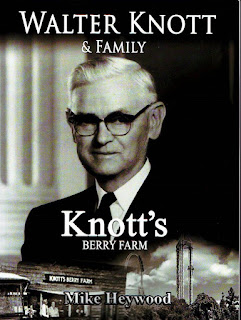
My friend Cathy has 4 frogs she has raised......... Meeps, Sunny, Ribi & Greenie
A frog is any member of a diverse and largely carnivorous group of short-bodied, tailless amphibians composing the order Anura (ανοὐρά, literally without tail in Ancient Greek). The oldest fossil "proto-frog" Triadobatrachus is known from the Early Triassic of Madagascar, but molecular clock dating suggests their split from other amphibians may extend further back to the Permian, 265 million years ago. Frogs are widely distributed, ranging from the tropics to subarctic regions, but the greatest concentration of species diversity is in tropical rainforest. Frogs account for around 88% of extant amphibian species. They are also one of the five most diverse vertebrate orders. Warty frog species tend to be called toads, but the distinction between frogs and toads is informal, not from taxonomy or evolutionary history.
An adult frog has a stout body, protruding eyes, anteriorly-attached tongue, limbs folded underneath, and no tail (the tail of tailed frogs is an extension of the male cloaca). Frogs have glandular skin, with secretions ranging from distasteful to toxic. Their skin varies in colour from well-camouflaged dappled brown, grey and green to vivid patterns of bright red or yellow and black to show toxicity and ward off predators. Adult frogs live in fresh water and on dry land; some species are adapted for living underground or in trees.
Frogs typically lay their eggs in water. The eggs hatch into aquatic larvae called tadpoles that have tails and internal gills. They have highly specialized rasping mouth parts suitable for herbivorous, omnivorous or planktivorous diets. The life cycle is completed when they metamorphose into adults. A few species deposit eggs on land or bypass the tadpole stage. Adult frogs generally have a carnivorous diet consisting of small invertebrates, but omnivorous species exist and a few feed on plant matter. Frog skin has a rich microbiome which is important to their health. Frogs are extremely efficient at converting what they eat into body mass. They are an important food source for predators and part of the food web dynamics of many of the world's ecosystems. The skin is semi-permeable, making them susceptible to dehydration, so they either live in moist places or have special adaptations to deal with dry habitats. Frogs produce a wide range of vocalizations, particularly in their breeding season, and exhibit many different kinds of complex behaviors to attract mates, to fend off predators and to generally survive.
Frogs are valued as food by humans and also have many cultural roles in literature, symbolism and religion. They are also seen as environmental bellwethers, with declines in frog populations often viewed as early warning signs of environmental damage. Frog populations have declined significantly since the 1950s. More than one third of species are considered to be threatened with extinction and over 120 are believed to have become extinct since the 1980s. The number of malformations among frogs is on the rise and an emerging fungal disease, chytridiomycosis, has spread around the world. Conservation biologists are working to understand the causes of these problems and to resolve them.
If you want to read a whole lot more about frogs, go here: https://en.wikipedia.org/wiki/Frog
- 4 (1/2-inch-thick) boneless pork chops
- Salt for sprinkling
- Black pepper for sprinkling
- 1/2 cup bread crumbs
- 2 tablespoons milk
- 2 tablespoons vegetable oil, divided
- 2 cloves garlic, minced
- 1 small onion, chopped
- 2 (15-1/4-ounce) cans whole kernel corn with red and green peppers, drained
- 1/4 cup chopped fresh cilantro
- 1/2 cup shredded Mexican cheese blend
- 1 tablespoon lime juice
- Place pork chops between two sheets of plastic wrap or plastic storage bags and using a meat mallet or rolling pin, flatten to 1/4-inch thickness. Sprinkle pork chops with salt and pepper. Place bread crumbs in a shallow dish. Dip chops in milk, and dredge in bread crumbs, patting on the breading until both sides are breaded evenly.
- In a large skillet over medium heat, heat 1 tablespoon oil until hot. Cook pork chops, in batches, 3 to 4 minutes per side or until golden brown. Remove from skillet to a plate.
- In the same skillet over medium heat, heat remaining 1 tablespoon oil until hot. Add garlic and onion, stirring constantly until tender. Stir in corn and cilantro. Cook 3 to 4 minutes or until heated through.
- Place pork chops on top of corn, and sprinkle with cheese. Cover and cook over medium heat 5 minutes or until cheese is melted. Drizzle with lime juice and serve.
Mr. Food Test Kitchen Tip!
- We bet you're gonna want to try our Italian version of these tender pork chops, too! Just substitute 6-cheese Italian blend for the Mexican, Italian-seasoned bread crumbs for the plain, fresh parsley for the cilantro, and lemon juice for the lime juice. Perfecto!
1931 – Rita Moreno, Puerto Rican-American actress, singer, and dancer
1939 – Tom Hayden, American activist and politician (d. 2016)
1940 – Donna Mills, American actress and producer
1943 – John Kerry, American lieutenant, lawyer, and politician, 68th United States Secretary of State
While the day could possibly be about the little round pasta noodles, it would be a fun way to celebrate. They make up a delicious pasta salad or several other pasta dishes. They also are popular with kids (of all ages) to use in different craft projects, maybe even one that results in a beautiful snowflake for the holidays.
However, the day celebrates the pasta dish formed in an 8 or 9-inch ring mold or bundt pan. Usually made from noodles, flour, breadcrumbs, cheese, eggs, and other seasonings, this dish is quite versatile. When baked, recipes call for the noodle ring to be removed from the mold and served on a plate giving it an elegant appearance.
HOW TO OBSERVE
Test your skills by making a noodle ring. Invite family and friends over for a taste-testing. We’re sure they will enjoy it. We provide a few different recipes to use:
Baked Noodle Ring
Picture Perfect Noodle Ring
National App Day on December 11th encourages us to explore all the possibilities apps afford us.
The word “App” was listed as the word of the year in 2010 by the American Dialect Society.
Short for Software Application, apps quickly appeared when our mobile devices incorporated smart technologies. As the power of our phones increased with processing chips, internet connectivity, and touchscreens, so did the apps that became available.
Since that time, apps continue changing how we work, live, and play. They offer opportunities, too, by creating thousands of new companies, millions of new jobs, and billions of dollars in revenue.
Apps accelerated in growth with the advent of Apple’s iPhone in 2007. In 2008, Apple introduced OS 2.0, which included approximately 500 apps and allowed third-party app generation. Over 3 million apps on both the Apple and Android platforms offer a plethora of options for business, productivity, entertainment, organization, security, news, and so much more. And every, programmers introduce thousands more.
Not only do apps keep us connected and organized, but through customization, apps fit our busy and changing lifestyles.
HOW TO OBSERVE
What apps keep you connected and up-to-date? Is there one app that has revolutionized your life? We want to know! Post your favorite app on social media. Share how apps make your life easier, too. Beyond games, what tools do you use to save money and time? While you expound on your favorites, explore new apps, too. What kinds of apps do you predict for the future?
NATIONAL APP DAY HISTORY
Platinum Edge Media and its founder CJ Thompson created National App Day in 2017 to celebrate the importance of apps as they change our collective culture by organically promoting creativity and innovation.





_Ranomafana.jpg)












